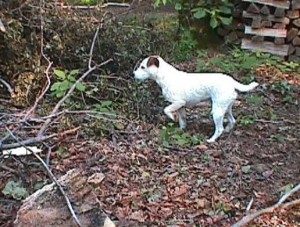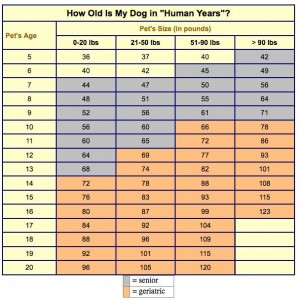 Dog Walkin’ Wellington
Dog Walkin’ Wellington
Let’s talk about older dogs
By Barbara Phillippi
Today, I took a fond, long look at my elderly Jack Russell Terrier, “Woody,” who will be 15 in May. What happened to that lightning-fast boy, with the bright, ginger colored points, the dog who greeted customers at the shop door, outwitted woodchucks, treed raccoons, and chased the cows, in the lane across the road?
I glanced over my shoulder as he padded slowly down the hall behind me, ever vigilant, still convinced that I might disappear into the bathroom, and never return. He has never failed to accompany me as I move from room to room in the house, and, as usual, he sits beside me while I’m, well, occupied – he has my undivided attention at last. I scratch his head, bright color now faded, take a tissue to wipe some moisture from the corner of his eye.
Surely, more than a few readers are also aware that their beloved dog’s years are piling up, are wondering when they’ll spot signs of pain, notice dimming eyesight, and the day that the dog just didn’t hear that whistle, or call to their side.
when they’ll spot signs of pain, notice dimming eyesight, and the day that the dog just didn’t hear that whistle, or call to their side.
What do we need to know about our aging canines? How old are they, really, in “dog years?”
Notice that the old saying, “one human is seven dog years,” isn’t really  accurate. And dog size and breeding complicate the accuracy of statistics. Mutts tend to live longest, having come from a diverse gene pool, and small dogs usually have longer life expectancy. Mark Stickney, DVM, director of General Surgery Services at Texas A&M University College of Veterinary Medicine and Biomedical Sciences, says that although it’s not unusual to see a 17-year-old miniature poodle, a 12-year-old Labrador retriever is considered old, and any dog in the giant breeds — dogs weighing more than 100 pounds, is considered geriatric at 6-7 years. “Generally speaking, the larger your dog is, the less time it will live,” Stickney says.
accurate. And dog size and breeding complicate the accuracy of statistics. Mutts tend to live longest, having come from a diverse gene pool, and small dogs usually have longer life expectancy. Mark Stickney, DVM, director of General Surgery Services at Texas A&M University College of Veterinary Medicine and Biomedical Sciences, says that although it’s not unusual to see a 17-year-old miniature poodle, a 12-year-old Labrador retriever is considered old, and any dog in the giant breeds — dogs weighing more than 100 pounds, is considered geriatric at 6-7 years. “Generally speaking, the larger your dog is, the less time it will live,” Stickney says.
Sadly, faithful older animals, who have known love and a home environment, often wind up at animal shelters, through no fault of their own.
“Older dogs lose their homes for many different reasons….most of them having nothing to do with problems the dog has, but rather with those of the person or family surrendering the dog. Many folks think dogs who end up at shelters or in rescue are all genetically and behaviorally inferior. But, it is not uncommon for very expensive, well-bred, well-trained dogs to outlive their usefulness, or novelty, with folks who bought them on impulse, and no longer want to take responsibility for them.”
“Other reasons older dogs become homeless: death of a guardian….not enough time for the dog…… change in work schedule….. new baby…..need to move to a place where dogs are not allowed…. kids going off to college…. allergies…. change in ‘lifestyle’…. prospective spouse doesn’t like dogs,” according to The Senior Dogs Project, http://www.srdogs.com/index.html
People looking for an adoptable dog ask to see puppies, and dogs up to three years of age. Veterinarians know that four-year-old dogs are not “geriatric,” but with every year past age three, shelters find them increasingly harder to place.
“The ultimate barrier is at age five. Once an animal turns five, it is nearly impossible to place quickly. And, if turned into a shelter, is almost certainly guaranteed a quick euthanization. Most shelters are so overcrowded, the only practical solution for them is to destroy the ‘unadoptable’ animals.” — Notes from Dachshund Rescue.
I visited Big Dog Ranch Rescue in Wellington, the largest no-kill shelter in South Florida, and spoke with Christina Wood about the older dog population at that facility.
“About 20% of our shelter population (around 120 dogs) fit the category,” she says. “Most of our animals average two months here before adoption, but the older dogs, who really need to be out of here, have a harder time.” She did mention Hank, a 15-yr-old Springer Spaniel, who found his forever home after several years at the shelter. “A guy came in one day, and that was it,” she smiles.
Peggy Adams and PB County Animal Care and Control Shelters have programs that encourage the adoption of senior animals by senior citizens, often lowering, or even eliminating, adoption costs for seniors. Big Dog Ranch Rescue doesn’t have such an agenda in place at the present time, but “we probably should,” says Christina. She believes that senior citizens and older dogs are a perfect combination. “And we do have a foster program, which encourages people to take these animals out of the shelter environment.” The older animals are healthy, know the ropes, and gratefully adjust to a new routine in a new home. Sometimes, fostering results in permanent adoption.
Christina shows me a few of the older residents of the shelter, most of whom have been there longer than she’d like. They’re healthy, seasoned, and ready to go. Each has its own appeal; I’d like to take them all home, of course. I return to a small, Yellow Lab type named Leslie. Her tail never stops, she begs the question, “Why not me? I’m just perfect!”

I promise Leslie that I’ll put her picture in my column. She’s on the Big Dog Rescue Ranch website, http://www.bdrr.org/
Many senior citizens are unable, for one reason or another, to access the internet. If you are, or know, an older individual who might benefit from the company of a gentle, faithful, housemate, please encourage them to visit Big Dog Ranch Rescue, or another shelter facility.
Christina wants me to emphasize that the “BIG DOG” part of the shelter name shouldn’t discourage potential adopters and foster prospects from checking out the facility and its tenants. “We have many small dogs too, on a regular basis.” At first, we were just big dogs, but now, we have all types.”
The vet says that my old dog, Woody, is basically in great shape, some arthritis, a little heart murmur (he’s had that for years), he doesn’t have the really sharp vision that the younger dogs do, and he’s almost deaf. But because these conditions usually advance slowly, dogs adjust pretty well.
Woody is slim and trim, a factor that his vet says plays a big part in healthy longevity for dogs.
When I snap on the leash, to take him out, he know why, gets his “business” done right away, no sniffing around and hunting the lizards. At bedtime, I say, “nite-nite,” and he enters his crate by my bed, and lies quietly ’til morning. Today, he played toy “tug of war” with one of my other terriers, but he’s increasingly happy to leave the noisy, frenetic activities of his housemates, and enjoy less stressful activity.
When the sun shines this afternoon, I’ll let Woody lie in the grass for awhile, and take him for a short walk. I’m a senior citizen too, and he doesn’t tow me down the street, like Gracie and Buck do. We’ll meet a neighbor’s dog, without the drama; he’ll enjoy a pat on the head from the little boy in the stroller, and he won’t try to chase that squirrel on the fence. Yes, we seniors know, and enjoy each other very much.
If you’re thinking about adding a canine companion to your household, please consider that older dog; it could be the love match of a lifetime.
“In a perfect world, every dog would have a home, and every home would have a dog.”
Over a lifetime, Barbara Phillippi has had mostly “normal” dogs – a few German Shepherds and a bunch of wonderful “mutts,” each with its own wonderful, quirky, qualities. For many years, she taught 4-H dog obedience courses, under the authorization of Cornell University’s Cooperative Extension Services. That terrific program teaches the basics of dog behavior, of every breed, to young dog owners. Today she lives in Wellington with three Jack Russell Terriers – Woody, Gracie, and Buck. “These guys showed me a learning curve that I never knew existed!”

